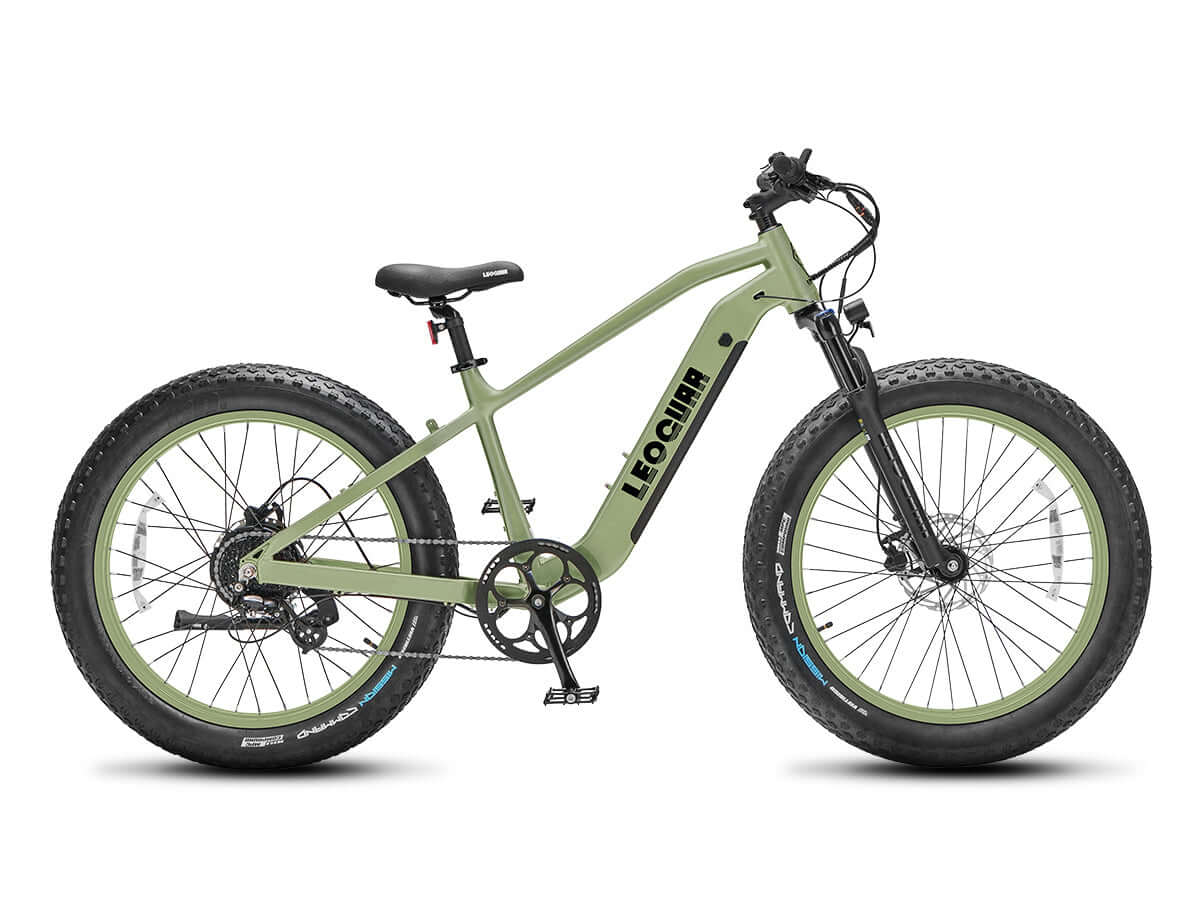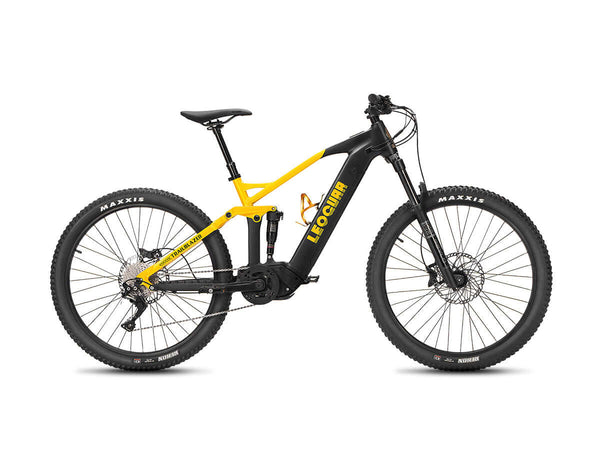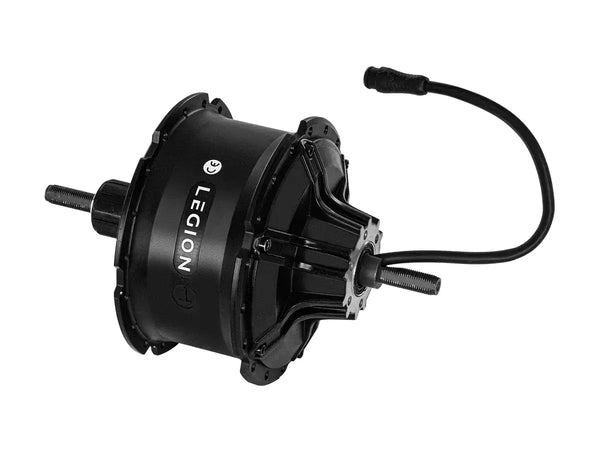
Electric Bike 30 Miles Per Hour Models: Fast & Safe Rides 2025
Why Electric Bikes That Go 30 MPH Are So Appealing
The appeal of an electric bike 30 miles per hour is clear. It can make your trip to work shorter, help you climb hills easily, and make daily travel exciting. But getting this kind of speed means you need more than a regular e-bike. Faster bikes need better brakes, stronger parts, and riders who know the rules.
This guide will help you understand everything you need to know. We'll explain the laws, show you what makes these bikes safe at high speeds, and share the best models for 2025.
Understanding E-Bike Laws and Classes
You need to know the legal rules before you buy anything. The question "Is an electric bike 30 miles per hour legal?" is the most important one to ask. The answer depends on where and how you plan to ride.
How E-Bikes Are Classified
Most states use a three-class system to control electric bikes. Learning this system is your first step.
- Class 1: The motor only helps when you pedal and stops helping at 20 mph.
- Class 2: The motor can work with a throttle and can push the bike up to 20 mph without pedaling.
- Class 3: The motor only helps when you pedal (no throttle) and stops helping at 28 mph.
A 30 mph e-bike doesn't fit into these standard classes. Companies often call these bikes "off-road mode," "unlocked," or "Class 4." They are not considered regular electric bikes by federal or most state rules. You can find a clear breakdown of e-bike classes for more details.

Where You Can Ride These Fast E-Bikes
The rules change based on where you want to ride and what mode you use. On public roads and bike paths, a bike going over 28 mph is usually not treated as a bicycle. It might be called a moped, motor-driven cycle, or another type of motor vehicle. This could mean you need a driver's license, vehicle registration, and insurance.
Riding in "unlocked" mode on a public bike path is almost always illegal and dangerous for other people. The "off-road" or "unlocked" modes that let you go 30 mph or faster are meant for private property only. Always check your local e-bike laws since rules can be very different between states and cities.
What Makes a Good High-Speed E-Bike
Top speed is just one number. The real test of a good high-speed e-bike is how well it handles that speed safely. A well-made electric bike 30 miles per hour model is a complete system where every part is built to handle the extra forces.
Control Systems: Brakes, Frame, and Suspension
At 30 mph, being able to slow down and stay stable matters more than being able to speed up.
Brakes: For this speed, you need 4-piston hydraulic disc brakes. The science is simple: the energy you need to stop goes up fast as speed increases. Stopping from 30 mph needs almost twice the braking force as stopping from 20 mph. Four-piston brakes give more stopping power and work with bigger rotors (180mm or 203mm) to handle heat better. This prevents brake fade on long downhills. Regular brakes or 2-piston hydraulic brakes are not strong enough for this job.
Frame & Shape: The frame must be extra strong to handle higher stress and prevent "speed wobble." This is a dangerous shaking that can happen at high speeds. Look for tough frames made from high-quality aluminum or steel, often inspired by motorcycle designs. The bike's shape should be stable, often with a longer wheelbase and different angles for confident handling.
Suspension: A full-suspension system (front fork and rear shock) is critical. It's not just about comfort; it's about control. Suspension keeps your tires touching the road over bumps and rough spots. At 30 mph, a small pothole that would be a minor bump on a slower bike can throw off a rider or cause loss of control.
Power Systems: Motor and Battery
Getting to high speeds and staying there needs a strong and reliable power system.
Motor: To consistently push a rider to 30 mph, a motor needs to deliver at least 1000W of peak power. You need to understand the difference between normal (sustained) power and peak power. While a 750W normal motor is the legal limit in some areas for Class 3 bikes, high-speed models rely on their ability to peak at 1000W, 1200W, or even more for strong acceleration.
Battery: A powerful motor is useless without a battery to match. High-speed riding uses energy very quickly. We think a battery with at least 750 watt-hours (Wh) is the minimum for a 30 mph e-bike to offer useful range. Look for good cell makers (like Samsung, LG, or Panasonic) and a strong Battery Management System (BMS). The BMS is the battery's brain, protecting it from overcharging and overheating while ensuring a long, safe life. Always choose bikes with UL 2849 certification, which proves the safety of the entire electrical system.
Tires: Your Connection to the Road
Your tires are your only link to the road. For a 30 mph e-bike, regular bicycle tires are not good enough. You need wider, stronger tires, often with motorcycle-style tread and a specific speed rating. These tires give a bigger contact area for better grip during speeding up, braking, and turning. They also have better puncture resistance to prevent a dangerous failure at speed.
Best Electric Bikes for 30 MPH in 2025
After lots of testing and research, we've picked the best models that balance speed, control, and quality building. Note: The top speeds listed are for off-road or private property use only. Riders must always follow local laws when riding on public roads.
| Model Name | Top Speed (Off-Road) | Motor (Peak Wattage) | Battery (Wh) | Brakes | Price (Est.) | Best For |
|---|---|---|---|---|---|---|
| Leoguar Fastron | 32 mph | 750W | 720Wh | 2-Piston Hydraulic | $1,489 | Off-Road & Comfort Ride |
| TerraVolt Apex | 35 mph | 1500W | 1040Wh | 4-Piston Hydraulic | $3,799 | Off-Road Dominance |
| Velocity Core 30 | 30 mph | 1000W | 750Wh | 4-Piston Hydraulic | $2,199 | Value and Commuting |
Fastron Fat Tire-Power Meets Practicality
The Fastron Fat Tire strikes an ideal balance between rugged off-road capability and everyday comfort. Its step-over frame, paired with a front alloy suspension fork (3.15" travel), absorbs trail shocks with ease while maintaining a planted ride feel—whether you're carving dirt paths or cruising suburban streets.
Motor: 750W Rear Hub
Battery: 48V 15Ah (720Wh)
Brakes: Tektro 2-Piston Hydraulic (180mm rotors)
Tires: 26" x 4.0" All-Terrain Fat Tires
From our testing, what sets the Fastron apart is its smooth yet confident acceleration. On private trail loops, it reached 32 mph at full throttle without feeling twitchy or underpowered. The wide tires grip loose terrain reliably, and the fork's travel helps tame rooty sections without compromising control. Despite its lower wattage compared to premium bikes, the ride quality and range—up to 63 miles on Pedal Assist 1—make it a seriously compelling option under $1,500.
TerraVolt Apex-The Trail Destroyer
For people who see trails as their main destination, the TerraVolt Apex is built to conquer them. With more suspension travel, a more powerful motor, and aggressive geometry, this bike is made for riders who push limits away from pavement.
Motor: 1500W Peak / 1000W Normal
Battery: 52V 20Ah (1040Wh) with Samsung cells
Brakes: Magura MT5e 4-Piston Hydraulic (203mm rotors)
Tires: 27.5" x 4.5" Knobby Off-Road Tires
Riding the Apex is an intense experience. The instant power from the 1500W motor can launch you up steep, loose climbs that would stop other bikes completely. The upgraded suspension and huge tires absorb roots and rocks, letting you keep incredible speed over rough ground. The higher voltage 52V system gives a noticeable punch, delivering peak performance for longer. This is less of a bicycle and more of a lightweight electric dirt bike.
Velocity Core 30-The Smart Choice
Proving that high performance doesn't need a huge price tag, the Velocity Core 30 delivers on the main requirements for a safe 30 mph experience. It makes smart compromises in less important areas to give a powerful, reliable package for commuters and recreational riders.
Motor: 1000W Peak / 750W Normal
Battery: 48V 15.6Ah (750Wh)
Brakes: Zoom 4-Piston Hydraulic (180mm rotors)
Tires: 20" x 4" Street-Tread Fat Tires
The Core 30 feels quick and easy to handle. While it may not have the top-end pull of the Apex, it easily reaches and holds its 30 mph top speed on flat ground. The smaller 20-inch wheels make it agile in city environments. We found that it provides all the essential safety systems—a strong frame, full suspension, and 4-piston brakes—in a package perfect for riders wanting to upgrade to a faster commuting tool without spending too much.
Safety Must Come First
Riding at 30 mph puts you in a different risk category than casual cycling. Your gear and thinking must be upgraded to match. This is not optional.
Your High-Speed Safety List
- Helmet: A standard bicycle helmet is not enough. We strongly recommend a full-face helmet certified to ASTM F1952 (downhill mountain bike standard) or a DOT-certified motorcycle helmet. Your face and chin are at risk in a high-speed crash.
- Protective Gear: Think like a motorcycle rider. An armored jacket, riding gloves with palm sliders, and knee pads can be the difference between walking away from a fall and getting seriously hurt.
- Visibility: You are moving faster than other road users expect from a "bicycle." Use bright front and rear lights, day or night. Wear bright or reflective clothing to make yourself as visible as possible.
The Safe Riding Mindset
- Increase Following Distance: Your braking distance is much longer. Double the following distance you would normally leave.
- Scan Farther Ahead: At 30 mph, you cover 44 feet every second. You must look far down the road for potential dangers like opening car doors, pedestrians, and crossing traffic.
- Check Your Bike Before Every Ride: Before every ride, check your tire pressure, test your brakes, and make sure all bolts are tight. A mechanical failure at speed can be very dangerous.
An electric bike capable of 30 miles per hour offers an incredible sense of freedom and usefulness. It can truly replace a car for many trips, making your commute faster and more fun. But this capability must be paired with knowledge and respect for the machine's power. By focusing on bikes with superior control systems, understanding the legal landscape, and committing to a higher standard of safety, you can responsibly embrace the thrill of speed. Choose wisely, gear up properly, and enjoy the ride.

Ride Smart, Save Big: Leoguar Black Friday Electric Bike Deals
Speed meets responsibility—and now, unmatched value. If you’re ready to embrace a 30 mph electric bike that blends power, comfort, and control, there’s no better time than this Black Friday.
Leoguar’s Early Access Event brings serious incentives to responsible riders:
- 🏷️ $100 OFF any eBike—Use code LEO100
- 🏷️ $300 OFF when you buy 2 eBikes—Use code LEO300
- 🎁 Free Gift Pack worth $217 (lights, phone mount, toolkit & more)
This limited-time offer helps you ride smarter—for less. Whether you're upgrading your trail companion or replacing your car commute, Leoguar’s fat tire ebikes like the Fastron deliver 32 mph thrills with safety-focused components and real-world range over 60 miles.
Frequently Asked Questions
Q: Are 30 mph electric bikes legal to ride on public roads?
A: In most states, electric bikes that can go 30 mph are not considered standard e-bikes and may require registration, insurance, and a driver's license when used on public roads. The 30 mph capability is typically intended for private property use only. Always check your local laws before riding.
Q: What safety gear do I need for a 30 mph electric bike?
A: You need more protection than regular cycling gear. We recommend a full-face helmet (ASTM F1952 or DOT certified), armored jacket, riding gloves with palm protection, knee pads, and high-visibility clothing. Bright front and rear lights are essential for visibility.
Q: How much should I expect to spend on a quality 30 mph e-bike?
A: Quality 30 mph electric bikes typically range from $2,200 to $3,800. Cheaper models may lack essential safety features like 4-piston hydraulic brakes and full suspension. Investing in proper safety components is crucial at these speeds.
Q: What's the difference between peak and nominal motor power?
A: Nominal power is what the motor can sustain continuously, while peak power is the maximum it can deliver for short bursts. A 750W nominal motor might peak at 1200W or more for acceleration. For 30 mph speeds, you typically need at least 1000W peak power.
Q: How far can I ride on a single charge at 30 mph?
A: Range depends on battery capacity, rider weight, terrain, and riding style. At sustained high speeds, expect significantly reduced range compared to normal riding. A 750Wh battery might provide 15-25 miles at high speeds, while larger 1000Wh+ batteries can extend this to 30-40 miles.











































Leave a comment